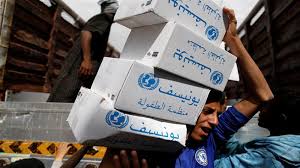Originally posted to The Guardian website, 22 June 2021
Estimated UK cut of $900m offsets increases by other nations, according to annual Global Humanitarian Assistance Report
International humanitarian spending by public donors dropped by $284m (£204m) between 2019 and 2020, and the UK government cut its humanitarian funding by the most of any major western country, a new report from the independent organisation Development Initiatives has found.
Its annual Global Humanitarian Assistance Report is regarded as one of the best sources for objective statistics on aid trends and humanitarian needs, and the report highlights the extraordinary pressure now being placed on UN-coordinated humanitarian appeals.
The total UK cut – put at $900m – offsets increases by other countries. Humanitarian assistance can be both multilateral or bilateral, but does not cover all overseas aid designed to provide long-term resilience. The UK has cut its large aid budget due to an unprecedented decline in the size of the economy and priority given to dealing with the impact of Covid in the UK.
The report said that aid cuts came even as the number of people in need grew by 19 million – largely because of the pandemic.
“While the majority of donors increased their humanitarian spending in 2020, this was offset by cuts in funding by a few key donors including the UK, Saudi Arabia and UAE. Germany and the US increased funding by 27% and 6% respectively, but the UK government cut total humanitarian funding by almost a third (31%), causing international humanitarian finance from governments to drop for the second year running.”
It said the 31% UK cut was the largest drop by a major aid donor apart from Saudi Arabia, which cut funding by 53%
The overall cut in public humanitarian aid in 2020 was measured at 1.2% ($284m), from $24.5bn in 2019 to $24.2bn in 2020. This followed a larger fall in funding of 3.1% ($793m) in 2019.
International humanitarian assistance had been steadily increasing from 2012 to 2018, peaking in 2018 at $31.5bn. Between 2012 and 2018, funding grew on average by 12% a year.
Overall UN humanitarian appeals grew by 27% in 2020 reaching a record $38.8bn. The number of appeals also grew from 36 to 55 – 17 of which were solely in response to the Covid pandemic.
These appeals were only 52% funded overall, resulting in the largest funding shortfall ever seen of $18.8bn. Within that, requirements related to Covid-19 fell even further short, having just 40% of required funding provided.
At the same time, the pandemic is diverting finance away from other urgent humanitarian needs, with the leading 20 donors cutting $4.5bn in non-Covid-related humanitarian funding between 2019 and 2020. The shortfalls are hitting some of the world’s most vulnerable countries, which are also at the highest risk from the impact of Covid-19.
More than half of those in need in 2021 lived in just nine countries. Six countries each had more than 10 million people in need living in their territory: Yemen (24.2 million), the Democratic Republic of the Congo (23.4 million), Venezuela (14.3 million), Afghanistan (14 million), Syria (11.7 million) and North Korea (10.9 million).
The numbers of displaced people in the world grew for the ninth consecutive year. In 2020, the total number of displaced people increased to 82.1 million (a 3.4% rise). More than half (52%) of displaced people lived in countries at very high or high risk from the impacts of Covid-19.
Exposure to the risks of the Covid-19 pandemic is particularly stark for people displaced in sub-Saharan Africa, where 99% of the displaced people were living in areas at high risk of Covid.
Link to the original post: https://www.theguardian.com/global-development/2021/jun/22/uk-aid-cut-behind-284m-fall-in-global-humanitarian-spending

